If there is one thing I know about Silkie owners it’s that they are crazy for Silkies (me included).
This often leads me down the path of searching for all kinds of Silkies – from adorable mixes to rare colors.
Yup, that’s right – Silkies don’t just come in the traditional white, black, brown, or grey. They can in all sorts of other rare colors too.
Here’s a look at some of the rarest colors of Silkies chickens there are, plus some of the stunning varieties and mixes you can come across.
Contents
What Are The Rarest Colors Of Silkie Chickens?
If you’ve been around Silkies, it’s likely your familiar with some of the “normal” colors.
But, the spectrum of colors that Silkies can come in is nothing short of a rainbow. Well, almost.
Now, it should be said that the American Poultry Association (APA) doesn’t recognize every color and variety as a true breed of Silkie.
Although this means some colored Silkies may be rejected by poultry organizations or poultry shows, we will still happily welcome them into our hearts!
Here are some of the rarest and most amazing colors of Silkie chickens.
Lavender/Blue

One of the most highly sought-after rare-colored Silkies is the beautiful, breathtaking lavender/blue Silkie.
These blue Silkies can range from a fresh, light blue-ish white, to a deep dark blue.
Blue “Self Blue” Silkies are recognized by the APA, and some chicken breeders have dedicated their life to hand-selecting the bluest and truest blue Silkies to maintain a quality bloodline.
We say a big thanks to those breeders for making these lavender/blue Silkies just that much more available for backyard chicken owners all across the world!
Splash Silkie

Another APA-recognized, but still rare Silkie color is the splash Silkie variety.
The “splash” refers to the splashes of black amongst their otherwise fully white feathers, creating quite a beautiful plumage.
They really do stand out amongst more standard colors of Silkies.
To this day I’ve never had the chance to raise one myself – but it’s never too late!
Red
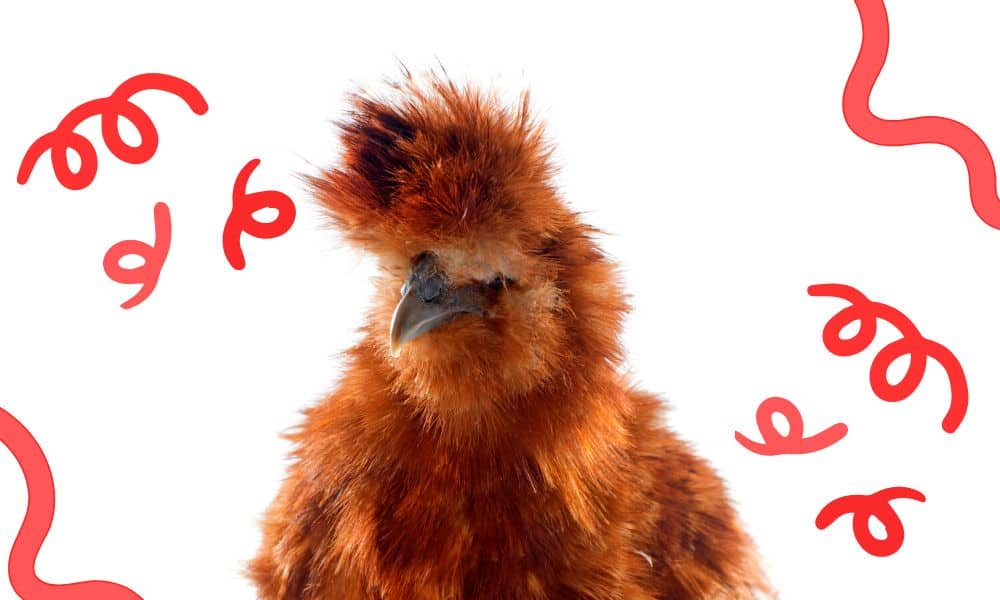
Red Silkies really are a rare find.
Usually, Silkies in a similar color range from dark brown, to a light “buff” color. But the red Silkie is distinctly red, just as prominent as any other standard red chicken breed.
Interestingly though, as young chicks, red Silkies actually appear brown to black. But, as they mature their plumage gets lighter and lighter until it’s a nice clear reddish-orange.
Cuckoo
Cuckoo Silkies are similar in color to the blue Silkie except they have a clear “barring” plumage, similar to your Cuckoo Maran or Barred Rock.
The reason Cuckoo silkies are so rare is that it takes a very specific pair of parents to sustainably continue breeding them.
Cuckoo Silkie roosters are able to pass their cuckoo gene’s down to both the females and males, but Cuckoo Silkie females will only be able to pass their Cuckoo gene’s down to the males.
The result: you’ll need a very experienced and patient Cuckoo Silkie breeder to get yourself some reliable Cuckoo Silkies!
Other Rare Silkie Varieties
Sure, there are some spectacular rare colored Silkies out there, but there are also some equally spectacular varieties too.
Here are some of the most amazing, rare Silkie varieties out there!
Frizzle Silkie
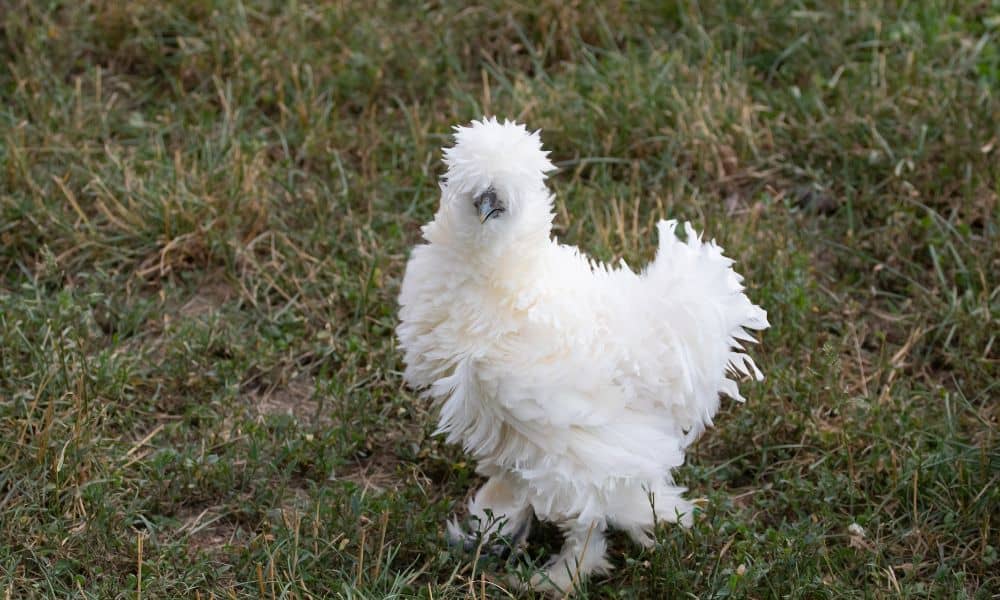
Although not technically a “variety” of Silkie, the “frizzle” refers to a genetic mishap that causes the feathers to lose their traditional shape – often referred to as the “frizzle gene”.
This gives way to the phenomenon where the frizzle Silkie’s feathers look like they are all curling outwards!
Although they may look different from their counterparts, they are equally as amazing and aren’t disadvantaged in their normal day-to-day lives.
Along with frizzle Silkies, you can also find frazzle Silkies and sizzle Silkies, each with its own unique plumage stemming from a change in their genetics.
Naked Neck Silkie

Ahh, the naked necks.
Although the Naked Neck chicken is a heritage breed of their own, the Naked Neck Silkie is one that has been crossed with a Silkie and a Turken (a type of Naked Neck).
These chooks are often referred to as Showgirl Silkies, and I can tell why.
Really though, Naked Neck Silkies are brilliant. However, as they are a hybrid, breeding Naked Neck Silkies together won’t produce further Naked Necked offspring.
Buff

These Silkies are like the chicken version of Golden Retrievers. They’re golden brown with stripes on their back that are a much deeper shade of brown.
This variety of Silkie is pretty tough to produce as it requires other, specific buff Silkies to yield it successfully.
Porcelain
Porcelain Silkies combine the best of both worlds. They require a mix of both Lavender Silkies and Buff Silkies, which can each be rare enough to find on their own.
The other rarity of the porcelain Silkie is that it can come in a variety of colors as lavender is a dominant gene.
This means that it takes patience to get yourself a true porcelain Silkie as most of the chicks come out lavender!
What Are the Most Common Colors of Silkie Chickens
Now we’ve covered some of the rarer colors and varieties of Silkies, we’ve got to give some love to the equally gorgeous, classically colored Silkies.
All of these classic colors of Silkie, white, brown, black, and gray, are recognized by the APA. Although they’re not rare, they are all equally spectacular in our books!
White
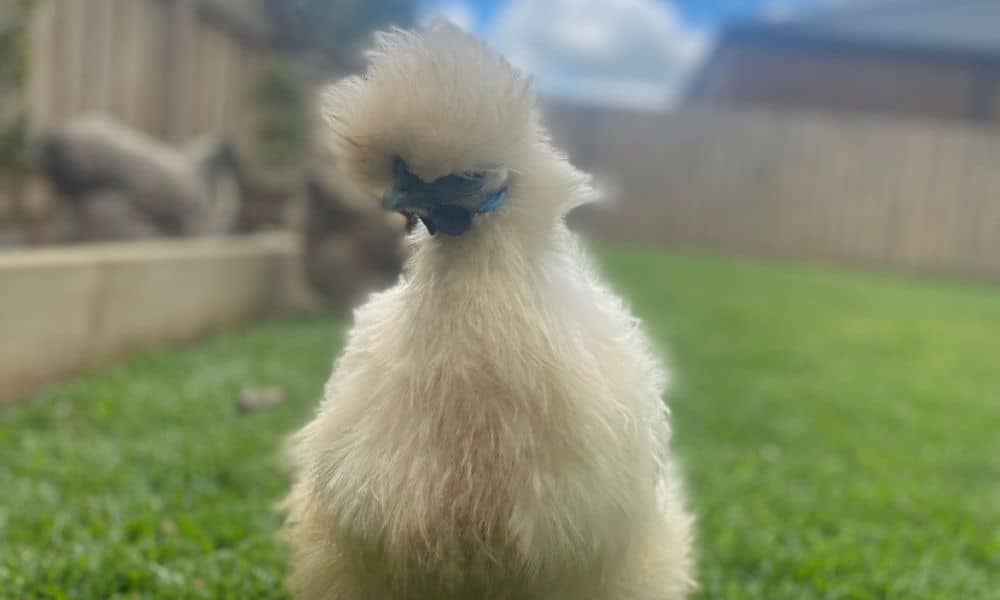
White is the most common Silkie color. But common doesn’t mean ordinary.
I’ve raised a whole host of Silkies and white Silkies have a unique hilarity to them, especially when they emerge from a dust bath and they turn into a black AND white Silkie haha.
Brown
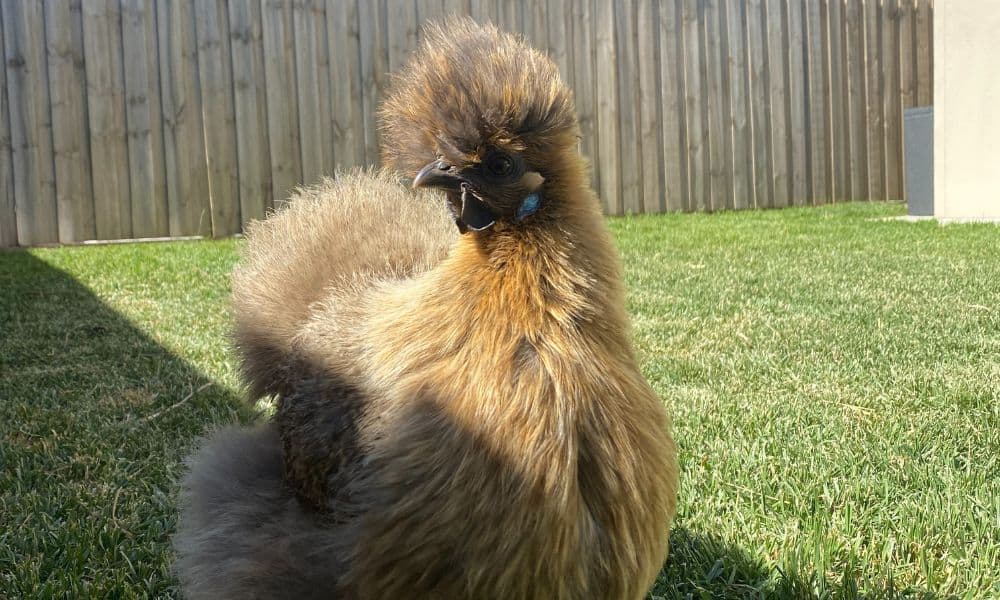
Brown Silkies are distinctly darker than buff Silkies. They can flash lighter and darker tones all over their plumage, and can even look golden in the sun!
Black
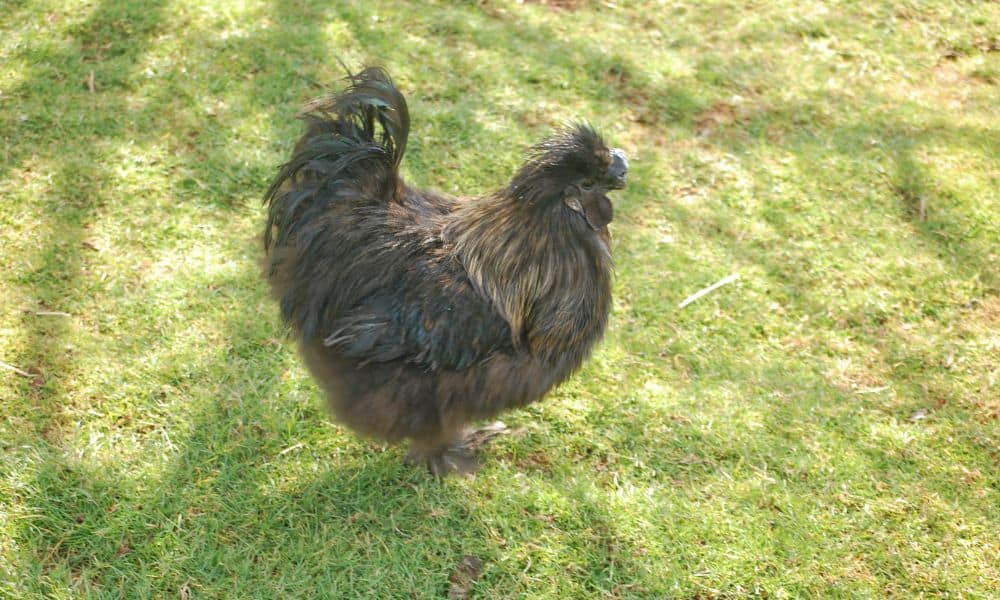
Black Silkies are jet black-colored and can even express a green sheen under the sunlight.
Although you would think these Silkies get extra hot in summer, so long as they don’t sunbathe too long they’ll manage just fine!
Some black Silkies can even show a few streaks of white under their main layers of feathers.
Gray
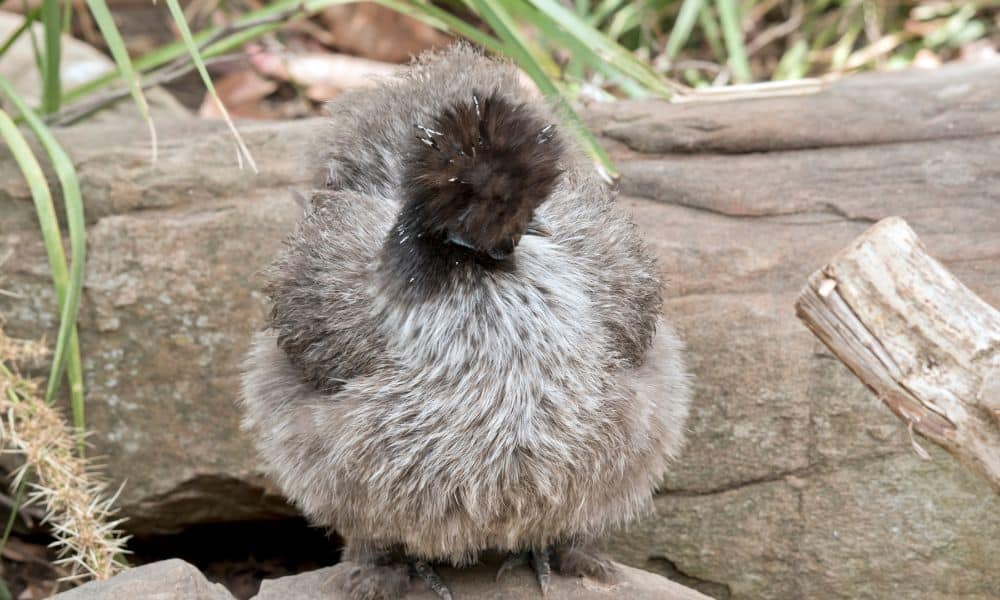
Gray Silkies are something else alright.
True beauties. Exhibiting a gorgeous display of silver and smokey gray, both light and dark, all across their bodies and atop their heads.
That’s All!
So there we have it — just a good handful of some of the rarest Silkie colors and varieties you can find across the world.
The rarest Silkie colors are red, cuckoo, blue, and splash, while the most common ones are white, brown, black, and gray.
Each of these colors can also be varied by the amazing types of silkies you can find too — from the Naked Necks to the frizzles!
Which is your favorite out of all these amazing creatures?
If you love the look of these Silkies, check out what other Afro Chickens there are across the world!
